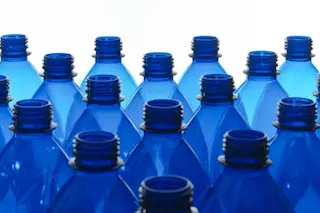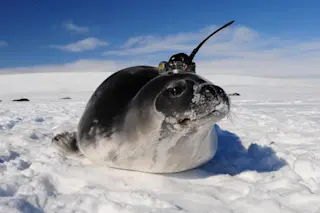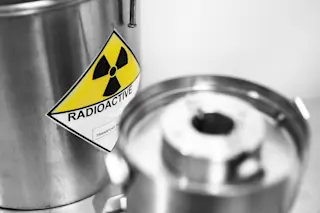“Welcome to Monsanto’s Plastics Home of the Future,” a voice announced in 1957 to Disneyland visitors who entered a four-bay pod, built almost entirely from plastic. Even the clothes in the future’s closets were made of it.
When the Walt Disney Company brought down the wrecking ball on the exhibit 10 years later, it bounced right off. That stuff is hardy!
Today the world makes and consumes about 600 billion pounds of plastic yearly, and the market is still growing about 5 percent a year.
Plastics are made from polymers—enormous molecules that link hundreds of thousands of small molecular units known as monomers.
Most polymeric chains are l-o-n-g; like strings of beads, they can fold and curl.
The most common plastic, polyethylene—composed of sprawling hydrocarbon chains—is used in grocery bags and bottles.
Speaking of plastic grocery bags, in 2009 Americans used 102 billion of them. Strung together they would circle ...














